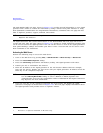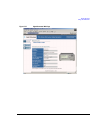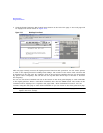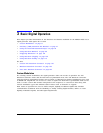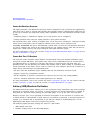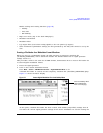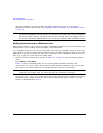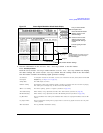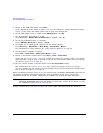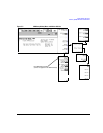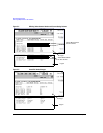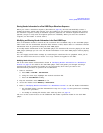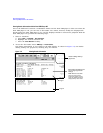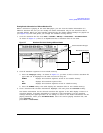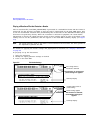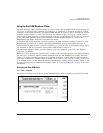
76 Chapter 3
Basic Digital Operation
Arbitrary (ARB) Waveform File Headers
3. Return to the ARB Setup menu: Press Return.
In the ARB Setup menu (shown in Figure 3-3), you can change the current instrument settings.
Figure 3-3 also shows the softkey paths used in steps four through nine.
4. Set the ARB sample clock to 5 MHz: Press
ARB Sample Clock > 5 > MHz.
5. Set the modulator attenuation to 15 dB:
Press
More (1 of 2) > Modulator Atten n.nn dB Manual Auto to Manual > 15 > dB.
6. Set the I/Q modulation filter to a through:
Press
I/Q Mod Filter Manual Auto to Manual > Through.
7. Set marker one to blank the RF output at the set marker point(s):
Press
More (2 of 2) > Marker Utilities > Marker Routing > Pulse/RF Blank > Marker 1.
For information on setting markers, see “Using Waveform Markers” on page 88.
8. Set the polarity of Marker 1 negative:
Press
Return > Marker Polarity > Marker 1 Polarity Neg Pos to Neg.
9. Return to the Header Utilities menu: Press
Return > Return > Header Utilities.
Notice that the Current Inst. Settings column now reflects the changes made to the current
signal generator setup in steps 4 through 8, but that the saved header values have not changed
(as shown in Figure 3-4 on page 78).
10. Save the current settings to the file header: Press
Save Setup To Header softkey.
The settings from the Current Inst. Settings column now appear in the Saved Header
Settings column. The file header has been modified and the current instrument settings saved.
This is shown in Figure 3-5 on page 78.
While a modulation format is active (is on), the waveform file (AUTOGEN_WAVEFORM) plays and you
can modify the header information within the active modulation format. Once you turn the
modulation format off, the header information is available only through the dual ARB player.
NOTE If you turn the modulation format off and then on, you overwrite the previous
AUTOGEN_WAVEFORM file and its file header. To avoid this, rename the file before you turn
the modulation format back on (see page 88).
Storing a waveform file (see page 87) stores the saved header information with the waveform.



